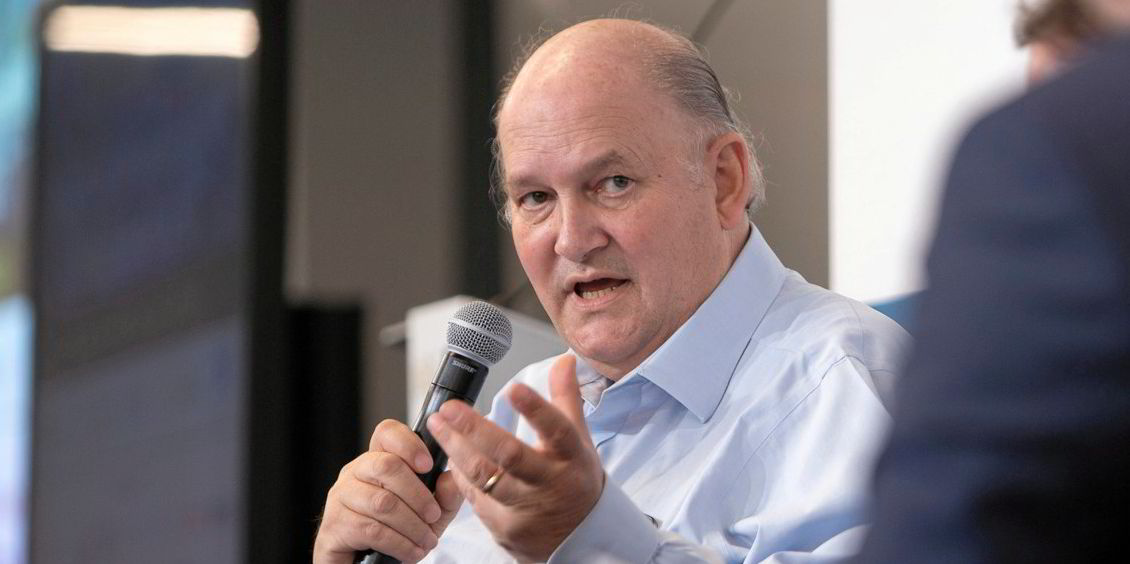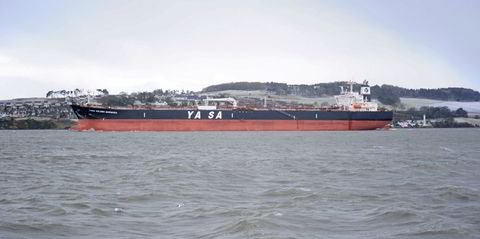It has been a week for US-based bank researchers to step up with views that what has been a strong bull run for the tanker market may yet have some ways to go.
On Thursday, Jefferies lead shipping analyst Omar Nokta upgraded ratings and price targets on VLCC stalwarts Frontline and DHT Holdings on the belief that the large tankers are ready to move beyond the negative impact of cuts by the Opec+ cartel.
Jefferies’ action followed a note in which veteran Evercore ISI analyst Jonathan Chappell, who reported that three-year time charters in the aframax and MR sectors have surpassed 22-year highs on some recent fixture activity, with suezmaxes not far behind.
Both researchers found cause to suggest that while tanker equities have logged strong gains over the past two years, investors still may have some upside to gather.
While Chappell excluded VLCCs from his analysis, they were the primary focus of the Jefferies note, which also made a case for aframaxes and product carriers.
Nokta had downgraded the VLCC sector last year on the Opec+ concerns but floated a change in outlook.
“Looking forward, non-Opec supply growth is expected to grow 1.6m barrels per day by year-end, boosting long-haul Atlantic Basin volumes, while crude prices suggest Opec+ members unwinding their voluntary cuts would be welcomed later this year. A return of Opec+ barrels would turbocharge VLCCs, in our view, but is not necessary for a stronger outlook,” Nokta told clients.
Jefferies raised its 2024 rate expectations for the large tankers to $60,000 per day from $55,000.
The bank took the largest listed VLCC player, Frontline, to a “buy” rating from “hold”, and increased its price target to $30 per share from $22.
Jefferies made the same rating upgrade to VLCC pure play DHT, with the target up to $14 from $11.
“Tanker stocks have gained 11% this year, after returning 41% in 2023 and 173% in 2022. However, we see continued compelling value in owning tanker stocks as they trade at just 0.8 times NAV and at a sizable 22.5% yield [on free cash flow],” Nokta wrote.
Chappell and charters
Chappell brands tanker spot rates as “incredibly volatile”, and does not find a lot of difference in one-year time charters in their influence based on short-term market drivers.
But he suggests that three-year time charters are different, and this is an area he has been studying.
“Three-year time charters, although certainly less frequent, are more representative of longer-term views on both supply and demand and given the fact that most charterers seeking three years of oil transport certainty are either global traders or oil majors, the demand side of the equation is likely far more understood by these participants than anyone else in the commodity world,” Chappell told clients.
With that background, he noted broker reports establishing recent record fixtures for aframaxes and MRs, with suezmaxes only 15% behind their record of 2008.
“It confirms the view that the current tanker market upturn has legs amid a still-muted orderbook and likely ongoing demand growth by those with the most in-depth knowledge of oil output and trade flows,” Chappell wrote.
“Although we acknowledge the illiquidity of the time-charter market at this longer duration, we believe the underlying message from oil majors willing to take this trade goes a long way in disproving the fear that investors have ‘missed this cycle’.”
The owner view
A couple of US-based shipowners who spoke to TradeWinds this week said they believe Chappell is on to something.
“I think it’s fair to say across the board that we’re seeing better price as well as duration,” Scorpio Tankers president Robert Bugbee said.
“Obviously the rates are still backwardated, but the entire base level of rates has moved upward.”
The product tanker giant sold a pair of 2013-built MRs earlier in the week for $36.2m and Bugbee drew a line between the robust prices and Chappell’s comments on charters.

“This is one of the things that’s adding to an S&P market that continues to increase,” Bugbee said. “We would expect to see further upward price increases on sales, as historically price is closely correlated with time-charter rates.”
At diversified New York tanker owner International Seaways, chief financial officer Jeffrey Pribor noted that the company has expressed a preference for longer charters, and would rather stay in the spot market than fix for one year.
If you can get two or especially three years at above historical averages — let alone all-time highs — we think it’s a good thing,” Pribor said.
Pribor agrees with Chappell’s premise of growing charterer enquiry, but also that caveat that the market is limited.
“There is more interest now. Customers are coming to accept that we’re going to be in a relatively elevated rate market for a while. But it’s not an incredibly deep market. You have to work at it. If there are a couple of deals like that a week across the market, that’s a lot,” Pribor said.





